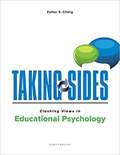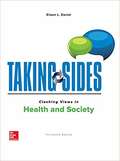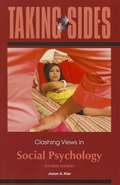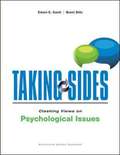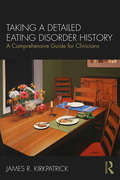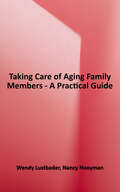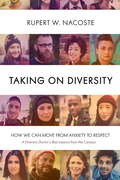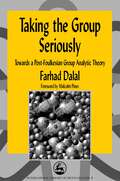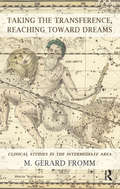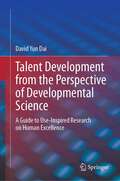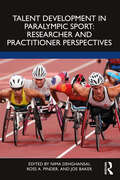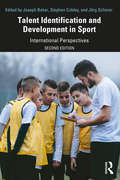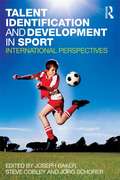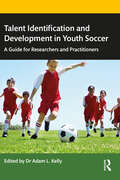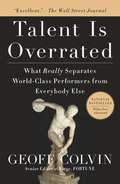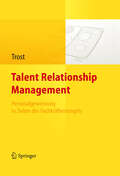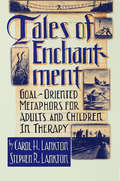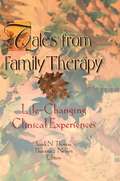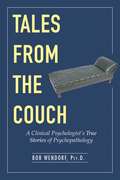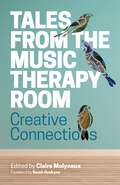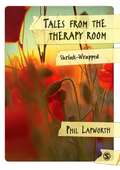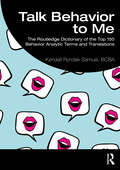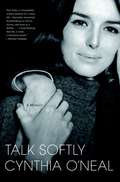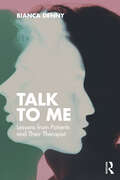- Table View
- List View
Taking Sides: Clashing Views in Educational Psychology (Eighth Edition)
by Esther S. ChangThe Taking Sides Collection on McGraw-Hill Create includes current controversial issues in a debate-style format designed to stimulate student interest and develop critical thinking skills. This Collection contains a multitude of current and classic issues to enhance and customize your course.
Taking Sides: Clashing Views in Health and Society
by Eileen DanielThe Taking Sides Collection on McGraw-Hill Create® includes current controversial issues in a debate-style forma designed to stimulate student interest and develop critical thinking skills. This Collection contains a multitude of current and classic issues to enhance and customize your course. You can browse the entire Taking Sides Collection on Create or you can search by topic, author, or keywords. Each Taking Sides issue is thoughtfully framed with Learning Outcomes, an Issue Summary, an Introduction, and an "Exploring the Issue" section featuring Critical Thinking and Reflection, Is There Common Ground?, Additional Resources, and Internet References.
Taking Sides: Clashing Views in Social Psychology (Fourth Edition)
by Jason NierTaking Sides volumes present current controversial issues in a debate-style format designed to stimulate student interest and develop critical thinking skills. Each issue is thoughtfully framed with Learning Outcomes, an Issue Summary, an Introduction, and an Exploring the Issue section featuring Critical Thinking and Reflection, Is There Common Ground?, and Additional Resources. Taking Sides readers also offer a Topic Guide and an annotated listing of Internet References for further consideration of the issues. An online Instructor’s Resource Guide with testing material is available for each volume. Using Taking Sides in the Classroom is also an excellent instructor resource. Visit www. mhhe. com/takingsides for more details.
Taking Sides: Clashing Views on Psychological Issues Expanded
by Brent Slife Edwin E. GanttThe Taking Sides Collection on McGraw-Hill Create(tm) includes current controversial issues in a debate-style format designed to stimulate student interest and develop critical thinking skills.
Taking a Detailed Eating Disorder History: A Comprehensive Guide for Clinicians
by James R. KirkpatrickTaking a Detailed Eating Disorder History educates health care clinicians of all backgrounds on how to best acquire a detailed eating disorder history and expands the clinical standard and effectiveness of history taking for a more thorough treatment of eating disorders. It describes the vast permutations and possible combinations of over 100 eating disorder behaviors as well as their connections to emotional and social triggers. Readers will also gain a stronger understanding of complicating factors related to eating disorders, such as diabetes, pregnancy, inflammatory bowel disease, and metabolic disorders, as well as drug and alcohol use, difficult relationships, and emotional strife. This informative new resource will be essential for any care provider of those with eating disorders.
Taking care of aging family members: a practical guide, Rev. and expanded
by Wendy Lustbader Nancy HooymanEstablished in its first edition as the definitive guide for family members and professionals on all aspects of caring for the aged, this beautifully written and comprehensive handbook has been updated to include more issues of concern to the aged and those who care for them. Unlike other books on caring for the aged, Taking Care of Aging Family Members provides thorough and substantive advice and information on the complete range of psychological, social, and financial issues that face those caring for an older person. This expanded edition includes new sections on spiritual concerns, ethnicity, and self-neglect, as well as updated sections on conflict resolution in families, long-distance caregivers; coping with physical changes, and the woman-in-the-middle who cares for both children and parents.
Taking on Diversity
by Rupert NacosteIn this enlightening book, a campus "diversity doctor" relates stories that individuals have shared with him about their anxieties in situations involving people who are in some way different than themselves. Dr. Rupert W. Nacoste regularly counsels students at North Carolina State University about their problems dealing with diversity of all kinds, including of gender, race, ethnicity, and sexual-orientation. Here, he shares his most effective techniques for handling the unavoidable realities of being in a neo-diverse community, whether that means in college or America as a nation. The author's proven "safe space" strategy can be applied to the campus, community groups, churches, and workplaces as a means to facilitate positive dialogue about diversity.In this time of current tensions, students, or "young travelers" as Nacoste fondly refers to them, still have much work ahead of them to achieve mutual respect and understanding. From everyday encounters, parties, and email and social media exchanges, they provide examples of ongoing bigotry: racial slurs and stereotypes are still used; young men continue to project demeaning attitudes toward women; and the heterosexual majority sometimes shows little understanding of the LBGT minority.Dr. Nacoste considers it his role to usher students off the "Wrong-Line train," and he has noticed that as they "leave the station," adults begin to follow their lead. The author demonstrates how we can maintain fairness and respect while still acknowledging our differences. By doing so, we can all learn to meet these challenges using sensitivity to different perspectives, open-minded attitudes, and the recognition that diversity in America is here to stay. From the Trade Paperback edition.
Taking the Group Seriously: Towards a Post-Foulkesian Group Analytic Theory
by Farhad DalalIn this critique and extension of the work of S.H.Foulkes, Farhad Dalal presents a thorough contemporary appraisal of the theory of group analysis and its relevance to psychoanalysis as a whole. The author argues that Foulkes failed to develop a specific set of group concepts, relying instead on the traditional individualistic framework of Freud. The book explores why Foulkes failed to escape from the orthodox mother-infant paradigm and offers a new post-Foulkesian interpretation of group analytic theory. Taking the Group Seriously is divided into six parts which trace the history of ideas behind group work, and draws on a wide range of subjects to support its thesis: not only psychoanalysis and group analysis, but also sociology, biology, chaos theory, genetics, economics, game theory and discourse theory. Using the author's practical group experience and including the latest ideas on the subject, this volume will be of interest to all those working in the field of psychoanalysis.
Taking the Transference, Reaching Toward Dreams: Clinical Studies in the Intermediate Area
by M. Gerard FrommThis book reports on clinical work in, and at the boundaries of, the intermediate space between patient and therapist, perhaps the space between reaching toward dreams and taking the transference. Though the clinical work to be described here was influenced quite deeply by the writing of Winnicott primarily and then of Lacan, it is meant to stand for itself as the record of - and a set of stories about - one therapist's experiences and learning. The chapters that follow take up a range of clinical conditions (hopelessness, self-destructiveness, psychosis), clinical phenomena (regression, impasse, trauma), technical issues (interpretation, transference, free association) and related topics (dreams, creativity, the analytic setting). Most of this work took place at the Austen Riggs Center, a small psychiatric hospital in Stockbridge, Massachusetts, in which quite troubled patients are offered intensive psychoanalytic psychotherapy in a completely open and voluntary therapeutic community setting.
Talent Development from the Perspective of Developmental Science: A Guide to Use-Inspired Research on Human Excellence
by David Yun DaiThis is a guide book for the field of studies on talent development and human excellence. It reviews the existing literature on the topic and helps map out a taxonomy of research with detailed description of purposes and methods of specific kinds of research on the topic and how each of them contributes to the larger scheme of understanding, identifying, and promoting talent development and human excellence for the vitality of society as well as the fulfillment of individuals. It fits with the new trend of developmental science that promotes use-inspired research and seeks a deep understanding of developmental diversity and aims to promote positive development, including human excellence. It is intended to guide researchers and graduate students in this emerging field of studies from a broad developmental science perspective.
Talent Development in Paralympic Sport
by Nima DehghansaiIdentifying and developing talented athletes to their fullest potential is a central concern of sports scientists, sports coaches, and sports policymakers. However, there is very little practical and theoretical knowledge for those working in Paralympic sport. The book collates the state of the science of current knowledge and practice in talent identification and development in this context by capturing international perspectives of current systems and processes. Written by a team of leading international experts, Talent Development in Paralympic Sport: Researcher and Practitioner Perspectives explores key factors and issues in contemporary sport, including: • current state of pathways in Paralympic sports across the globe • designing optimal developmental environments • long-term modeling of Paralympic athlete development • understanding the complexity of talent selection in Paralympic sport With an emphasis on practical implications for all those working in sport, the book offers an authoritative evaluation of the strengths and weaknesses of contemporary systems for identifying and developing talent in Paralympic sport. This is important reading for any student, researcher, practitioner, or coach with an interest in skill acquisition, youth Para sport, elite Paralympic sport, Paralympic sports coaching, Paralympic sports development, sport psychology, skill development, or sports engineering. In addition, there has been interest from universities to offer courses/modules specific to Paralympic sports.
Talent Identification and Development in Sport: International Perspectives
by Joseph Baker, Stephen Cobley, and Jörg SchorerIdentifying and developing talented athletes to their fullest potential is a central concern of sport scientists, sports coaches, and sports policy makers. The second edition of this popular text offers a state of the science synthesis of current knowledge in talent identification and development in sport, from the biological basis of talent to the systems and processes within sport through which that talent is nurtured. Written by a team of leading international experts, the book explores key factors and issues in contemporary sport, including: nature and nurture in the development of sporting talent designing optimal developmental environments long-term modelling of athlete development understanding the complexity of talent selection in-depth case studies of successful talent development systems. With an emphasis on practical implications for all those working in sport, the book offers an authoritative evaluation of the strengths and weaknesses of contemporary systems for identifying and developing talent in sport. This is important reading for any student, researcher, or practitioner with an interest in skill acquisition, youth sport, elite sport, sports coaching, or sports development.
Talent Identification and Development in Sport: International Perspectives (Routledge International Handbooks Ser. )
by Joseph Baker Jörg Schorer Steve CobleyIdentifying talent in athletes and developing that ability to its fullest potential is a central concern of sport scientists, sports coaches and sports policy makers. This book offers a comprehensive synthesis of current knowledge in talent identification and development in sport, from the biological basis of ability to the systems and processes within sport through which that ability is nurtured. Written by a team of leading international experts, the book explores key factors and issues in contemporary sport, including: genetics secondary factors such as birth date, cultural context and population size perceptual motor skill acquisition and expertise sports development policy in-depth case studies, including European soccer, East African running and US pro sports. With an emphasis throughout on practical implications and processes for all those working in sport, the book offers an authoritative evaluation of the strengths and weaknesses of contemporary systems for identifying and developing talent in sport. This is important reading for any student, researcher or practitioner with an interest in skill acquisition, youth sport, elite sport, sports coaching or sports development.
Talent Identification and Development in Youth Soccer: A Guide for Researchers and Practitioners
by Adam L. KellyTalent development pathways in youth soccer provide opportunities for young players to realise their potential. Such programmes have become increasingly popular throughout governing bodies, professional clubs, and independent organisations. This has coincided with a rapid rise in sport science literature focused specifically on optimising player development towards expertise. However, the decreasing age of recruitment, biases in selection, inconsistencies in the language used, underrepresented populations, and large dropout rates from pathways have magnified the potential flaws of existing organisational structures and settings. Moreover, despite both the professionalisation of talent development pathways and growing research attention, we still know little about the characteristics that facilitate accurate recruitment strategies into pathways and long-term development outcomes. Talent Identification and Development in Youth Soccer provides an all-encompassing guide for both researchers and practitioners by gathering the existing literature to help better understand the current context of this discipline. Chapters are contributed by a team of leading and emerging international experts, examining topics such as technical, tactical, physical, psychological, social, activities and trajectories, career transitions, relative age effects, creativity, and genetics, with each chapter offering important considerations for both researchers and practitioners. With a dual emphasis on both theory and practice, this book is an important text for any student, researcher, coach, or practitioner with an interest in talent identification, talent development, youth soccer, soccer coaching, or expertise and skill acquisition.
Talent Is Overrated: What Really Separates World-Class Performers from Everybody Else
by Geoff ColvinThe stories of extraordinary people who never stopped challenging themselves and who achieved world-class greatness through deliberate practice, including Benjamin Franklin, comedian Chris Rock, football star Jerry Rice, and top CEOs Jeffrey Immelt and Steven Ballmer.
Talent Relationship Management
by Armin TrostAngesichts des dramatisch zunehmenden Fachkräftemangels wird es für Unternehmen in Zukunft noch schwieriger sein, Schlüsselfunktionen zu besetzen. Neue, aktive und teils aggressive Methoden werden gebraucht, um die wenigen talentierten Kandidaten zu finden und an das Unternehmen zu binden. Der Autor - Berater und Professor an einer innovativen Business-School - stellt das Konzept Talent Relationship Management (TRM) anhand von Fallbeispielen vor und gibt Tipps, wie TRM in Unternehmen (auch in kleinen und mittelständischen) umgesetzt werden kann.
Talent Relationship Management: Personalgewinnung in Zeiten des Fachkräftemangels
by Armin TrostAngesichts des dramatisch zunehmenden Fachkräftemangels wird es für Unternehmen in Zukunft noch schwieriger sein, Schlüsselfunktionen zu besetzen. Neue, aktive und teils aggressive Methoden werden gebraucht, um die wenigen talentierten Kandidaten zu finden und an das Unternehmen zu binden. Der Autor – Berater und Professor an einer innovativen Business-School – stellt das Konzept Talent Relationship Management (TRM) anhand von Fallbeispielen vor und gibt Tipps, wie TRM in Unternehmen (auch in kleinen und mittelständischen) umgesetzt werden kann.
Tales Of Enchantment: Goal-Oriented Metaphors For Adults And Children In Therapy
by Carol H. Lankton Stephan R. LanktonWhat can a therapist do when faced with the all-too-familiar client who seems stuck or resistant? With this volume, veteran therapists Carol and Steve Lankton offer clinicians an effective tool with which they can expand their ability to be successful in therapy through integrating the use of indirection into the more commonly used rational and direct approach. This is a book of predesigned stories that the Lanktons and their trainees have told in successful therapy in order to assist clients in their movement toward specific, preplanned goals. The stories are categorized according to the way they are structured to reach particular types of goals, such as changes in affect, attitudinal restructuring, changes in behavior, changes in family structure, changes in self-image and many others.
Tales from Family Therapy: Life-Changing Clinical Experiences
by Thorana S Nelson Frank N Thomas Terry S TrepperYou often see books on theoretical approaches and new interventions in therapy, but you rarely, if ever, find a book where therapists discuss their personal reactions to and views of the therapy they offer. In this amazing volume, Tales from Family Therapy: Life-Changing Clinical Experiences, psychologists, psychotherapists, and marriage and family counselors come together to share their unique experiences in therapy sessions and how they’ve learned that often the clients know more than they do! As you will see, and as these therapists reveal, sometimes all the top-notch and most innovative theories in the world won’t help a client in distress.Tales from Family Therapy isn’t just about therapists learning a lesson or two from their clients. It’s about compassion, healing, being taken by surprise, thinking on your toes, and encouraging people to believe in their strengths--not just their weaknesses. These stories represent to the authors some of the most special, most rewarding, and most puzzling moments in all their years of therapy. They invite you to share in their recollections and discussions of: the power of speaking accepting, respecting, and working with the realities clients bring the importance of first impressions in counseling how personal narratives develop through relationship coloring outside the lines of the dominant culture helping clients determine when rocking the boat is needed listening to your clients and not just your theories developing the self-of-therapist In the therapy room anything can happen, and as Tales from Family Therapy shows, anything does. Graduate students, counselors, licensed therapists, family educators, and family sciences professionals, as well as lay readers, will find this insightful book a helpful forum where the struggles, doubts, and triumphs of psychotherapy are revealed to encourage and inspire those who participate in the therapeutic process.
Tales from the Couch: A Clinical Psychologist?s True Stories of Psychopathology
by Dr Bob WendorfTales from the Couch is collection of actual case studies and a primer on psychopathology, as well as a captivating reflection on the human condition. Drawn from Dr. Bob Wendorf’s thirty-six-year career years as a clinical psychologist, the book examines the lives of some of his most troubled patients, in a project that aims to both educate and fascinate the reader. Clinical syndromes are described and dramatized by real-life case examples (altered only as necessary to protect patient confidentiality). Each of the sixteen chapters focuses on a particular psychiatric diagnosis, including Multiple Personality Disorder, Asperger’s, and ADD. The clinical picture and symptoms are described and explained, then brought to life by case examples taken from the author’s practice. Dr. Wendorf presents the cases as a series of narratives--some dramatic, some humorous, most quite poignant. Along the way, the author offers his own reactions to the people and events described here and application to the general human condition as well. Tales from the Couch offers compelling stories of extraordinary people, clinical conditions, and events--both in and out of the therapy hour--while providing insights into the nature of human beings, mental illness, and the psychotherapeutic enterprise.
Tales from the Music Therapy Room: Creative Connections
by Sarah Hoskyns Claire Molyneux Alison Talmage Heather Fletcher Shari Storie Ajay Castelino Carolyn Ayson Libby Johns Marie Willis Nolan Hodgson Roger HicksMoving beyond progress reports, clinical assessments and practical goals, this book brings to life the reflective aspects of music therapy. The result of a collaboration between New Zealand music therapists, it invites the reader to share their encounters in the therapy room through a wide variety of writings, including short stories, poetry and personal reflections. The addition of poems by a music therapy client adds a rare and innovative dimension to this book. Grounded in clinical practice, each piece of writing starts from the lived experience in the therapy room and conveys something of the ineffable elements of music therapy. Thoughtful, touching and featuring beautiful illustrations, this book will appeal to anyone looking for a more personal account of music therapy practice, including practitioners, clients and students.
Tales from the Therapy Room: Shrink-Wrapped (The\karnac Library)
by Phil LapworthThese ten fictional short stories give students of counselling and psychotherapy a unique insight into what actually goes on in therapy. Exploring aspects of the client-therapist relationship, the reader is given a fly-on-the-wall view of the therapeutic process. Rather than suggesting a ′correct′ approach, they explore possibilities and provide entertaining, vivid and thought-provoking descriptions of the therapeutic journey. Issues explored include: - contracting - boundaries and confrontation - self-disclosure on the part of the therapist - dream interpretation - the influence of the consulting room environment - conflicting belief systems. These are much more than just engaging stories - Phil Lapworth draws on over 25 years of clinical experience to show how the student can integrate theory into real practice with real clients. The final chapter explicitly highlights the specific theories, models and issues that are illustrated throughout and provides questions, learning objectives, exercises and further reading to encourage critical thinking. A door into the often-hidden perspective of what a therapist might think and feel within the therapy session, this ′shrink-wrapped′ resource will be treasured by counselling and psychotherapy trainees and practitioners for years to come. Reader Responses to Tales from the Therapy Room: ′Delightful, moving stories, recounted with pith and wit′ ′What a little gem this book is. Each short story distinct, crisp and unpredictable′ ′A delightful, thoughtful and often funny peek into an imaginary therapy room′ ′I′m limiting myself to 1 tale a night, so that I can savour it a bit longer′ ′These tales have something of a detective story about them...unnerving and compelling at the same time like a good thriller, with a wonderful twist in the end′ ′Beautifully constructed and lightly executed′ ′Distinct, crisp and unpredictable… I came to believe that even the author was surprised by what came next′ ′I found this book un-put-down-able and re-read several of the stories′ ′Phil Lapworth seems to have invented a new genre of his own. Each story is a little jewel, and I had to keep reminding myself that they were fictional′ ′He has caught the poignancy of human vulnerability as well as its absurdity and humour′ ′These stories stand undeniably on their own as surprising and delightful duets of the psychotherapeutic relationship, often concluding with a wry and humorous twist, always entertaining and warm-hearted. We look forward to reading more such tales′
Talk Behavior to Me: The Routledge Dictionary of the Top 150 Behavior Analytic Terms and Translations
by Kendall Ryndak Samuel, BCBATalk Behavior to Me provides a unique and comprehensive resource for those seeking to understand the science of behavior analysis. The publication features direct translations of the 150 most commonly used terms in the field, making it the first of its kind to provide clear and accessible explanations of behavior analytic jargon.One of the book's standout features is its coverage of the many branches of behavior analysis, including applications in sports, fitness, forensics, organizational behavior management, public health, environmental sustainability, animal behavior training, and more. With this breadth of coverage, the book offers a valuable resource for practitioners and scholars alike, providing a single source for understanding the full range of behavior analytic practices. To further support readers, it includes illustrations throughout, which serve to clarify complex concepts and deepen the reader's understanding. Additionally, each chapter includes tips and lessons for practical application of concepts.Its accessible language, practical examples, and comprehensive coverage make Talk Behavior to Me an essential addition to the library of scholars, practitioners, and students alike.
Talk Softly: A Memoir
by Cynthia O'NealActress and model Cynthia O'Neal was living her dream life--married to the famous stage and screen actor Patrick O'Neal, the mother of two young sons, resident of the Dakota downstairs from John Lennon, owner of the successful Ginger Man restaurant, and frequent guest at dinner parties with Leonard Bernstein and Rudolf Nureyev.And then she changed course suddenly, surprisingly, and completely. The AIDS epidemic hit the arts community hard, and after seeing the multitude of people facing an unfamiliar and stigmatized disease completely alone, Cynthia walked into the fray. With the support of longtime friend Mike Nichols, she founded Friends in Deed and soon found herself spending her days in hospitals, cramped rooms, and dirty apartments, anywhere a patient needed a hug, a hand held, or confidence boosted. And when Patrick became ill and passed away in 1994, Cynthia had to work through her own grief instead of someone else's and found her life transformed again.Talk Softly is the story of a life well-lived--with passion and compassion, in celebration of the joy of each moment, and with the ability to surprise yourself when you least expect to.
Talk To Me: Lessons from Patients and Their Therapist
by Bianca DennySharing the extraordinary stories of ten everyday people engaging in psychotherapy, this book takes the reader into the room, showing the realities of being in therapy and providing insight into the perspectives of both the patient and the clinician.Through these cases from her own practice, author and psychotherapist Bianca Denny dissects, unravels and reconstructs experiences of grief, denial, jealousy, shame, desire, and letting go. A terminally ill woman desperate to reconcile with her estranged family. A new mother on the precipice of admission to a psychiatric unit. A delusional man, intent on harming his wife. A bachelor who self-sabotages his last chance of happiness. An adult daughter struggling to understand the relationship with her mother, in the wake of her parents' divorce. A person for whom a diagnosis of ADHD raises more questions than it answers. Denny shares her personal and professional insight through reactions of vulnerability, sadness, compassion and frustration. Readers are invited into the minds of patients as well as the internal workings of a therapist’s mind.Exploring the complexity of the patient and therapist relationship, and what actually happens in therapy, this book is essential reading for qualifying and early career therapists.
